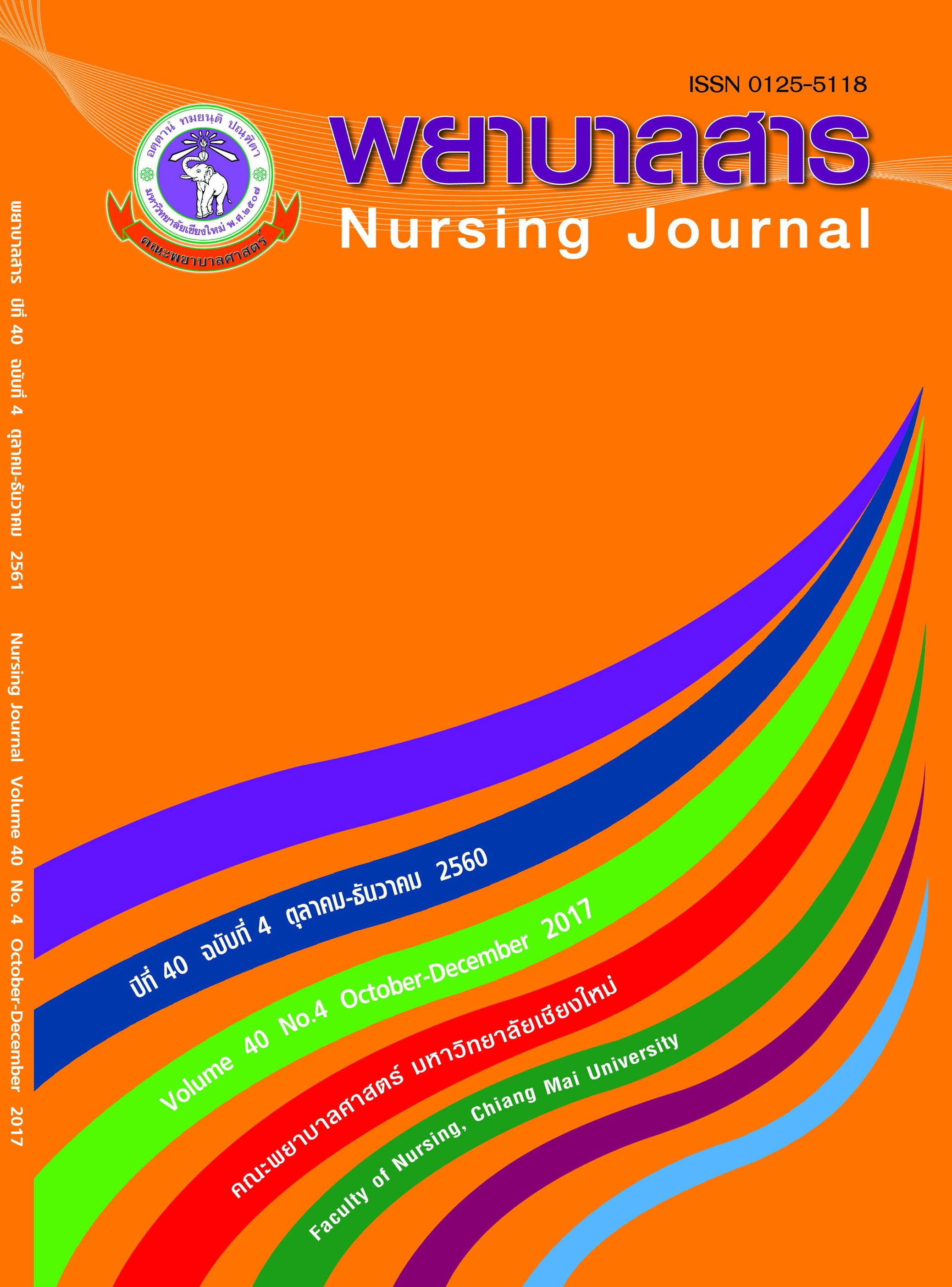Nursing Support and Satisfaction During Labor Among Bangladeshi Primiparous Mothers
Keywords:
Nursing support, satisfaction during labor, primiparous mothersAbstract
Childbirth is a highly joyful experience and a universally celebrated event. On the other hand, it is a frightening experience for many mothers, especially primiparous mothers. This descriptive study aimed to examine Bangladeshi primiparous mothers’ perceived nursing support and satisfaction during labor. Data were collected among 82 primiparous mothers from a general secondary hospital in Southern part of Bangladesh, April to May, 2015, by using the Bryanton Adaption of the Nurses Support in Labor Questionnaire [BANSILQ] (Bryanton et al., 1994) and the Birth Satisfaction Scale Revised [BSS-R] (Martin & Martin, 2014). The internal consistency reliability of this questionnaire was found, and Cronbach's alpha coefficients of .81 and .82 were measured, respectively. The data were analyzed by using descriptive and Pearson product moment correlational statistics via SPSS version 13.0.
The study results showed that primiparous mothers perceived a moderate level of nursing support (= 85.28, SD = 6.88) and a moderate level of satisfaction during labor (= 32.22, SD = 2.31). There was no correlation between nursing support and satisfaction during labor. These findings suggest that hospital authorities and nurses should be concerned the role to provide quality nursing support and to improve their satisfaction during labor.
References
Best, J. W., & Kahn, J. V. (2003). Research in education (9thed.). Boston: Pearson Education.
Bryanton, J., Fraser-Davey, H., & Sullivan, P. (1994). Women’s' perceptions of nursing support during labor. Journal of Obstetric, Gynecologic, and Neonatal Nursing, 23, 638 - 644.
Burns, N., & Grove, S. K. (2009) The Practice of nursing research: appraisal, synthesis, and generation of evidence (6thed.). ST. Louis, Mo, Saunders.
Chunuan, S. K., Kochapakdee, W. C. (2003). Patient satisfaction with nursing care received during the intrapartum period. Thai Journal Nursing Research, 7, 83-92.
Cunningham, F., Levenc, K., & Bloom, S. et al. (2014). Williams's obstetrics (24thed.). New York McGraw-Hill Education.
Dick-Read, G. (2005). Childbirth without fear: The principle and practice of natural childbirth (4thed.). London K: Pinter & Martin.
Drummond, J., & Rickwood, D. (1997). Childbirth confidence: Validating the childbirth self- efficacy inventory (CBSEI) in an Australian sample. Journal of Advanced Nursing, 26, 613–22.
Hinic, K. A. (2015). The relationships among perceived stress, birth satisfaction and breastfeeding self- efficacy in early postpartum women. Seton Hall University Dissertations and Theses (ETDs).
Hodnett, E. D., Gates, S. L., Hofmeyr, G., & Sakala, C. (2009). Continuous support for women during childbirth. Cochrane Pregnancy & Childbirth Group, Cochrane Database of Systematic Reviews, 1, doi:10.1002/14651858. CD003766.
Hofmeyr, G. J., Nikodem, V. C., Wolman, W., Chalmers, B. E., & Kramer, T. (1991). Companionship to modify the clinical birth environment: Effects on progress and perceptions of labor, and breastfeeding. British Journal of Obstetrics and Gynaecology, 98, 756-764.
Hussein, M (2011) Global development is support by: Get men in the delivery room, say Bangladesh's first midwives, p1.
Johnson, R. C., & Slade, P. (2003). Obstetric complications and anxiety during pregnancy: Is there a relationship? Journal of Psychosomatic Obstetrics & Gynecology, 24, 1–14.
John, A., & Crowhurst (2007).Analgesia and anesthesia. International Edmond D Keith (7th ed) Dewhurst's text book of Obstetric & Gynecology. Blackwell publishing, USA.
Klaus, M. H., Kennell, J. H., Robertson, S., & Sosa, R. (1986). Effects of social support during parturition on maternal and infant morbidity. British Medical Journal, 293, 585–87.
Langer, A., Campero, L., Garcia, C., & Reynoso, S. (1998). Effects of psychosocial support during labour and childbirth on breastfeeding, medical interventions and mothers’ well being in a Mexican public hospital: A randomized clinical trial. British Journal of Obstetrics and Gynaecology, 105, 1056–1063.
Lavender, T., Walkinshaw, S., & Walton, I. (1999). A prospective study of women’s view of factors contributing to a positive birth experience. Midwifery, 15, 40-46.
Lederman, R. (1995). Relationship between anxiety, stress, and psychosocial development to reproductive health. Behavioral Medicine, 21, 101-109.
Lohr, K. (ed). (1990). Medicare: a strategy for quality assurance. Institute of Medicine. Washington D.C.: National Academy Press.
Martin, C. H., & Fleming, V. (2011). The birth satisfaction scales. International Journal of Health Care Quality Assurance, 24, 124–135.
Martin, C. J. H., & Martin, C. R. (2014). Development and psychometric properties of the Birth Satisfaction Scale-Revised (BSS-R). International Journal HealthCare Midwifery 30, 610–619.
Mohammad, K., Shaban, I., Homer, C., & Creedy, D. (2014). Women's satisfaction with hospital-based intrapartum care: A Jordanian study. International Journal of Nursing and midwifery, 6, 32-39.
Page, L. A., & Candish, R. Mc. (2006). The new midwifery science and sensitivity in practice (2nd ed.). Edinburgh: Elsevier.
Polit, D., & Hungler, B. (1999). Nursing research: Principles and methods. Philadelphia: Lippincott, Pa, USA.
Saisto, T., Salmela-Aro, K. Nurmi, J., & Halmesmaki, E. (2001). Psychosocial characteristics of women and their partners fearing vaginal childbirth. British Journal of Obstetrics and Gynaecology, 108. 492- 498.
Sperber, A. D. (2004). Translation and validation of study instruments for cross-cultural research by the American Gastroenterological Association, 126, 124 –128. doi:10.1053/j.gastro.2003.10.016.
Srisuthisak, S. (2009). Relationship among stress of labor, support, and childbirth experience in post partum mothers. Virginia Commonwealth University. Part of the Maternal, Child Health and Neonatal Nursing Commons. (Thesis dissertation).
Vivilaki, V., & Antaniou, E. (2009). Pain relief and retaining control during childbirth: A sacrifice of the feminine identify. Health Science Journal, 3, 3-9.
Waldenstrom, U. (1999). Experience of labor and birth in 1111 women. Journal of Psychosomatic Research 5, 471– 482.
Wolman, L., Chalmers, B., Hofmeyr, G. J., & Nikoderm, V. C. (1993). Postpartum depression and companionship in the clinical birth environment: A randomized, controlled study. American Journal of Obstetrics and Gynecology, 168, 1388-1393.
Downloads
Published
How to Cite
Issue
Section
License
บทความที่ได้รับการตีพิมพ์เป็นลิขสิทธิ์ของวารสารพยาบาลสาร
ข้อความที่ปรากฏในบทความแต่ละเรื่องในวารสารวิชาการเล่มนี้เป็นความคิดเห็นส่วนตัวของผู้เขียนแต่ละท่านไม่เกี่ยวข้องกับมหาวิทยาลัยเชียงใหม่ และคณาจารย์ท่านอื่นๆในมหาวิทยาลัยฯ แต่อย่างใด ความรับผิดชอบองค์ประกอบทั้งหมดของบทความแต่ละเรื่องเป็นของผู้เขียนแต่ละท่าน หากมีความผิดพลาดใด ๆ ผู้เขียนแต่ละท่านจะรับผิดชอบบทความของตนเองแต่ผู้เดียว






